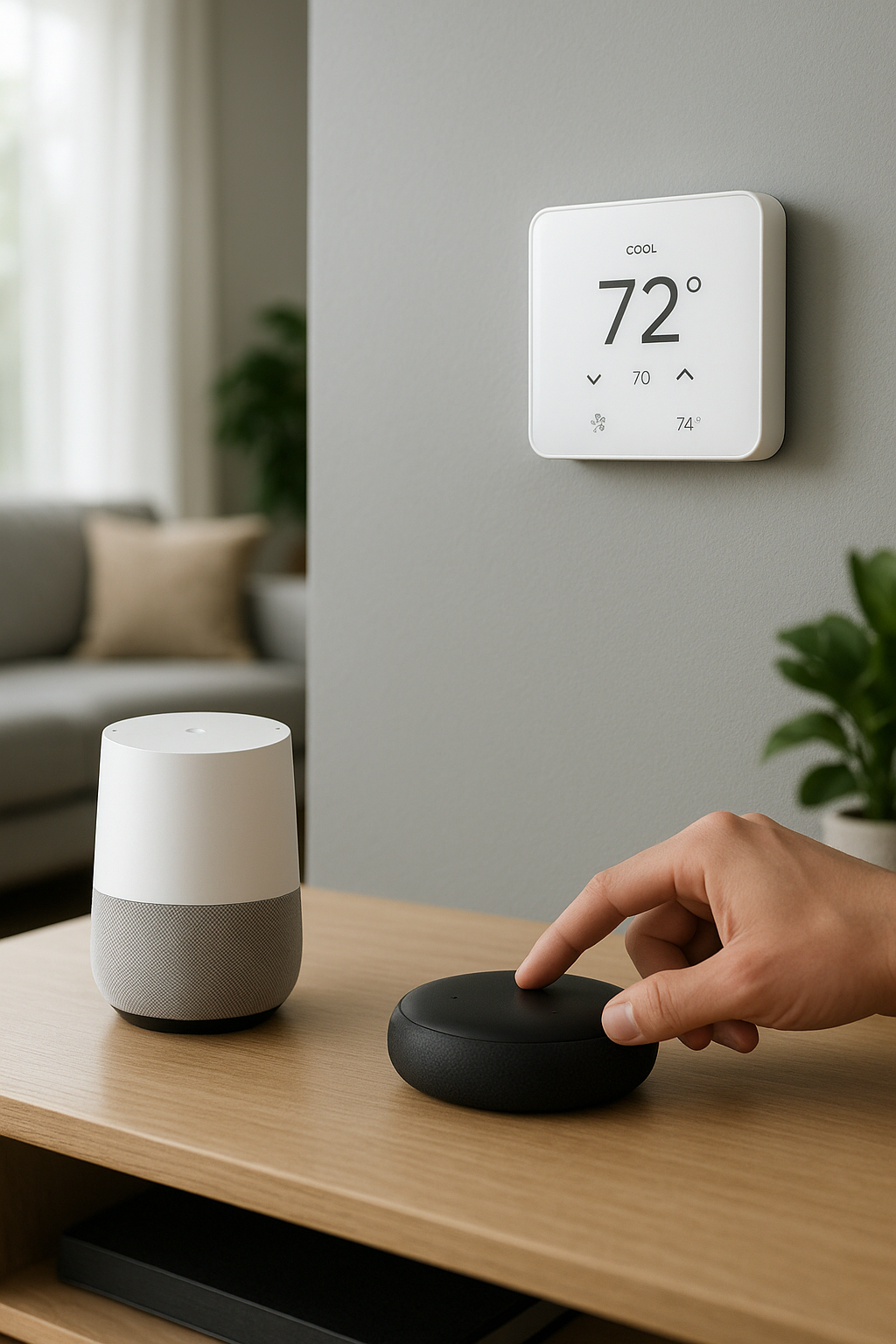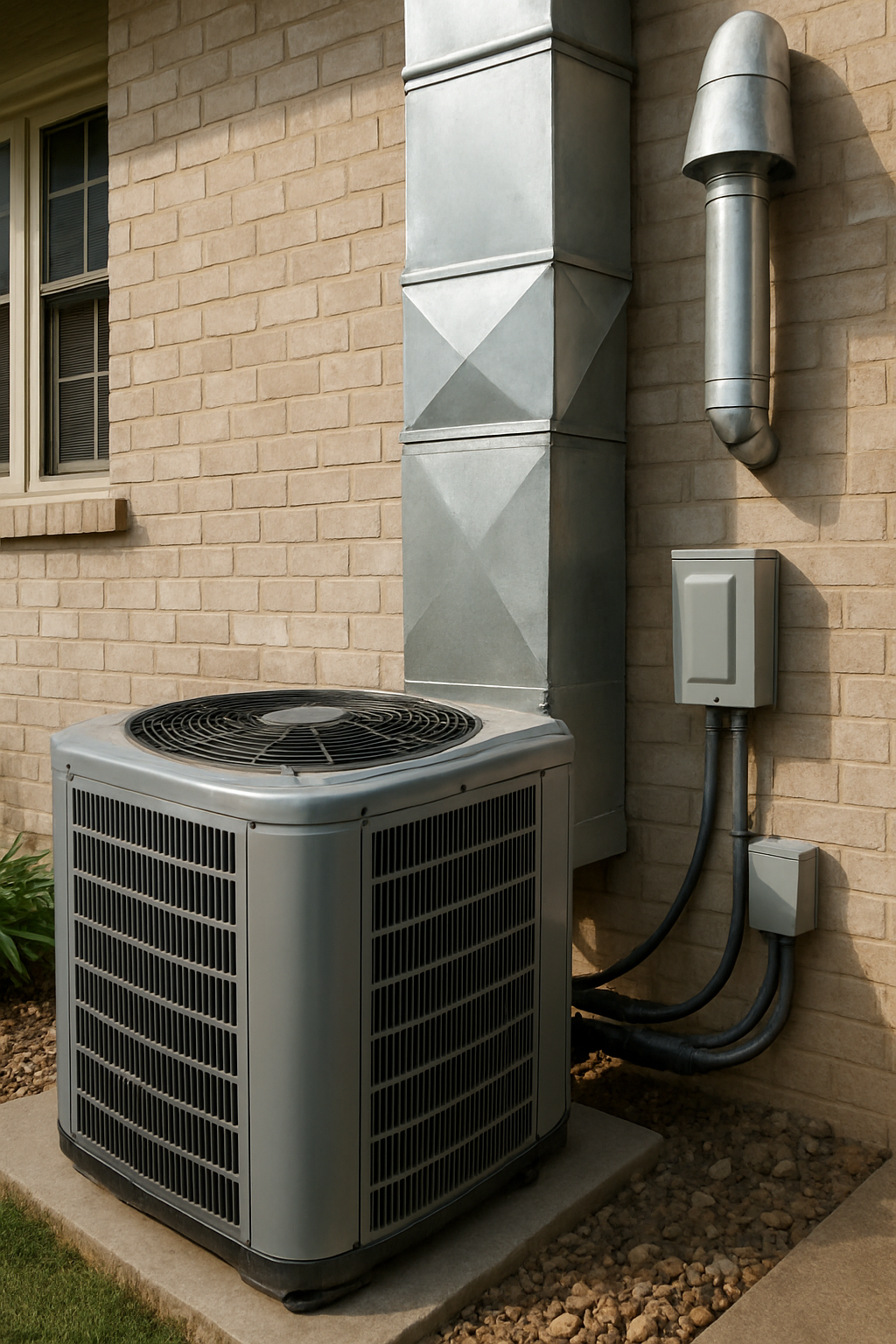
“Turn up the heat to 72.” It’s that easy – voice-controlled HVAC is transforming how we interact with our home climate. Instead of walking to a thermostat or pulling out your phone, you can simply speak a command and your system responds. Voice control, enabled by smart thermostats and digital assistants like Alexa or Google Assistant, is quickly moving from novelty to mainstream. In fact, voice-controlled thermostats are already here and making manual controls a thing of the past
galmicheandsons.com. Many homeowners are using devices like Amazon Echo or Google Nest Hub to adjust the temperature with simple phrases. Let’s explore why voice-controlled HVAC is such a big deal and how it promises a more convenient future for home comfort.
1. The Convenience of Hands-Free Control
The most obvious benefit of voice-controlled HVAC is convenience:

- Instant Adjustments: Whether you’re cooking in the kitchen or lying on the couch under a fan, you can adjust the temperature without interrupting what you’re doing. Just say, “Alexa, set the living room to 75 degrees,” and it’s done. No need to walk to the wall unit.
- Whole-Home Control: If you have a system with multiple zones or smart thermostats in different areas, voice commands can control each one specifically. You might say, “Hey Google, cool the upstairs to 77°,” and target just that area.
- Remote Voice Commands: It’s not just when you’re at home. Because voice assistants can be accessed via your phone, you could literally use voice control from anywhere. For example, at work you might tap your phone’s assistant and say, “Set my home AC to 80 degrees” if you forgot to turn it up – same effect as using the app, but sometimes speaking is faster than tapping through an app interface. Voice-controlled thermostats allow remote control of most functions even when you’re away galmicheandsons.com.
2. Integration with Smart Speakers and Hubs
Most voice HVAC control is achieved by linking your smart thermostat to a voice assistant device or service:

- Popular Platforms: Amazon Alexa, Google Assistant, and Apple Siri (via HomeKit) are the big three. Nearly all modern Wi-Fi thermostats can connect with one or more of these. For instance, enable the Alexa skill for Ecobee or Nest, then issue commands through any Alexa-enabled speaker.
- Hub vs No Hub: Some thermostats have voice capability built-in (Ecobee has an Alexa speaker built in). Others work via a separate hub or smart speaker. Either way, setup is usually simple through the thermostat’s app and the voice assistant app (like adding a device in Alexa or Google Home).
- Home Automation Routines: Voice control isn’t just about one-off commands. You can incorporate your HVAC into routines. For example, “Good Night” could be a phrase that triggers your assistant to turn off lights and set the thermostat to your bedtime temperature. Or “I’m home” could turn on music and also adjust climate settings to comfort mode.
- Multi-Device Coordination: If you have a smart home hub (SmartThings, Hubitat, etc.), your thermostat can interact with other devices. For instance, “Alexa, I’m leaving” could lock doors, turn off lights, and set the HVAC to away mode all at once.
3. Benefits Beyond the Novelty
Some might wonder if talking to your thermostat is just a gimmick. But there are real benefits:

- Accessibility: For people with mobility issues or disabilities, voice control is empowering. Elderly or physically impaired individuals can adjust their home climate without needing to get up or manipulate small controls.
- Precision and Reminders: It’s easy to forget to adjust the thermostat when leaving home. Voice assistants can serve as a reminder (“Alexa, remind me to set the thermostat before I leave”). Or if you’re in a rush, a quick voice command while heading out the door ensures it’s done.
- No Learning Curve for Guests: Everyone knows how to speak. If you have guests or a house-sitter, they might not know how to use your fancy thermostat or app, but they can certainly say “set the temperature to 74 degrees” and achieve the same result. It’s a very natural interface.
- Cool Factor: Let’s be honest – there’s some sci-fi satisfaction when you say “Make it cooler in here” and your house obeys. It’s a little glimpse of the future that can be fun and impress friends, all while being genuinely useful.
4. The Future of Voice and HVAC
Voice-controlled HVAC is likely to get even more advanced:

- More Natural Conversations: As AI voice assistants improve, you might not need rigid commands. In the future, you could say “I’m a bit hot” and the system will intuitively respond by cooling a couple degrees. (It might interpret that as a request to drop the temperature slightly in the current room.)
- HVAC Talks Back: It’s possible your HVAC might talk back in helpful ways. For example, the system could politely remind you, “It’s time to change the filter for better efficiency,” or alert you: “I’ve been running non-stop; maybe check if a window is open.” This kind of two-way interaction could catch problems early and keep you informed.
- HVAC-Specific Assistants: We might see voice assistants built into HVAC systems themselves. Imagine your thermostat has its own voice assistant focused on comfort: it could proactively ask, “Nobody’s been in the living room for an hour. Should I adjust the temperature to save energy?” This interactive approach would optimize comfort and savings even further.
- Integration with AI Climate Control: Voice is one input method, but combined with AI and IoT, your HVAC system could become even more autonomous. You might just override or fine-tune by voice. For example, telling your home “I’m going to exercise now” could prompt a series of adjustments – maybe pre-cooling the room you’ll use for a workout, knowing your body will heat up.
- More Devices Responding: Right now you mainly talk to thermostats. In the future, more HVAC components might respond to voice. Perhaps you’ll tell your air purifier to switch to max mode, or your ventilation system to bring in fresh air. The voice ecosystem is likely to expand.
Conclusion
Voice control is poised to be a standard part of home climate control. It’s the natural next step in making our homes more responsive and convenient. By simply speaking, you can have instant comfort – it feels a bit like living in the future. As more devices and appliances become part of the smart home ecosystem, voice-controlled HVAC is not only here to stay – it’s likely to get even better.
If you already have a smart thermostat, consider linking it with a voice assistant to unlock this hands-free convenience. And if you’re contemplating an upgrade, voice capability is definitely a feature to look for.
